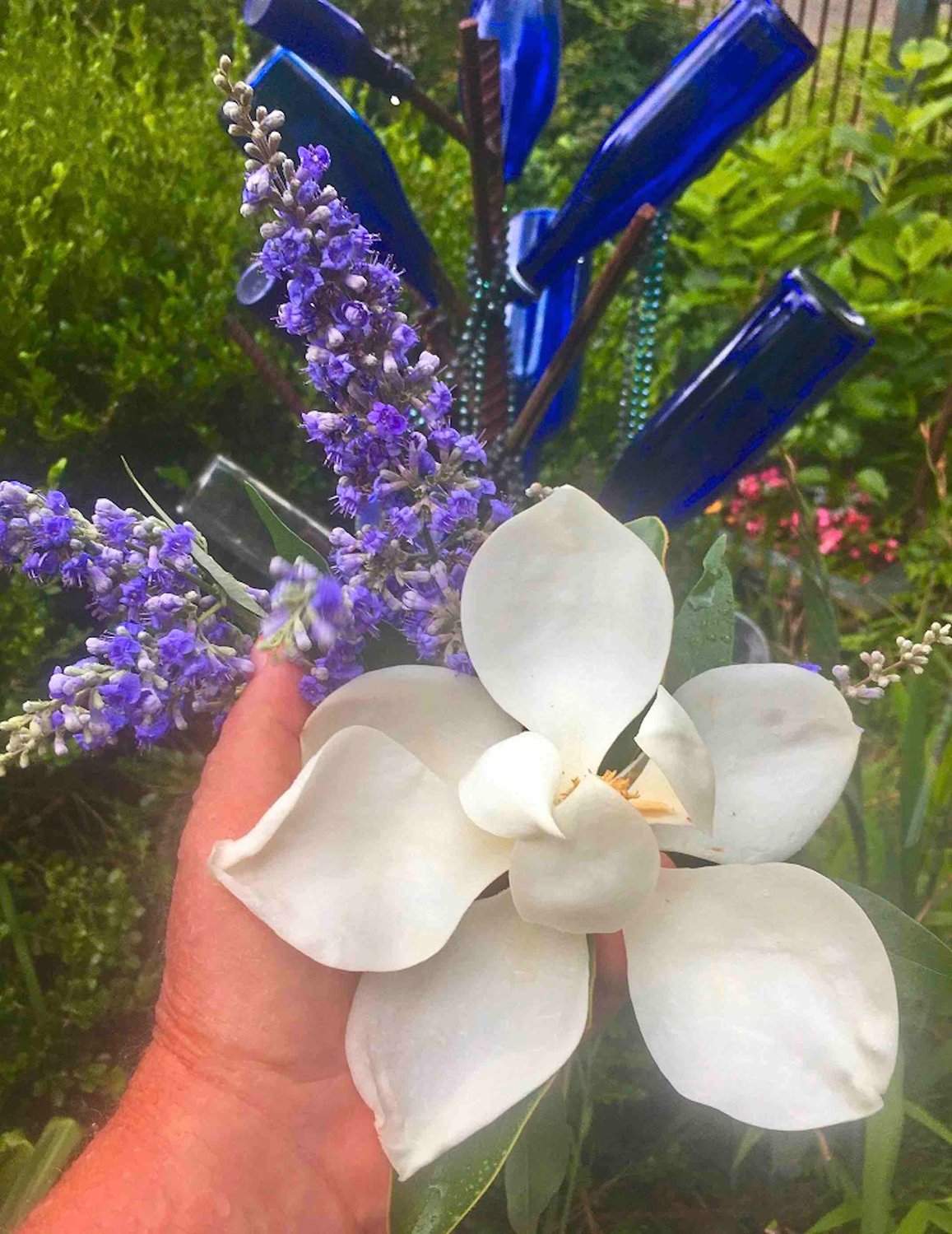Nature’s magnificent flowers
Dang it. I just discovered a young tree seedling in my garden that will sooner or later have to be cut down, but it seems wrong, maybe unpatriotic, to do it.
When mature it's a magnificent plant whose flowers are probably more widely recognized world-wide than any other. But in most gardens it can be a monster that gobbles up garage-size areas, with tangled, shallow roots so dense that few other plants can eke out a living beneath its massive limbs, especially when buried under its large, thick, waxy fallen leaves.
I'm talking, of course, about a Southern magnolia. Our state tree, that sports our state flower. The one that the Garden Clubs of Mississippi use to line miles and miles of all the major driving entrances to our state. The one whose huge flower is showier than Texas's Lone Star and South Carolina's palmetto; I think it's the Magnolia State's proudest brands. Ought to be on our flag.
There are benefits to it, of course, besides making a statement. The native woodland tree is a thick, sound-muffling evergreen with great climbing limbs and huge, highly fragrant flowers followed by attractive pods with protruding red seeds whose fermenting coverings have a wonderful funky aroma.
But yeah, it gets big. Enter Little Gem, a genetic aberration found growing as a chance seedling in 1952 and grown ever since from rooted cuttings or grafted. It's a diminutive version that gets only about a fourth the size of its big mama, taking years to get just a few yards tall.
Like most Southern magnolias, Little Gem and the somewhat similar one called Teddy Bear have glossy deep green leaves with furry brown undersides, but they are just a few inches long and wide; the fragrant creamy white flowers will fit in your hand. And Little Gem is the longest-blooming magnolia; where others have a big spring flush and a few sporadic blooms scattered over the summer, Little Gem is adorned with lemon-citrusy blossoms from April into November.
I've seen it grown for years in large pots even up in New England, and trimmed into large evergreen hedges here. It's a choice screen between houses and condos, and perfect for espaliering against walls.
Little Gem is fast to bloom but kinda slow growing. To help my son get his new ones off to a good start we dug extra-wide holes, added a small amount of bark to the native dirt, and loosened the potting soil and roots to help them start growing outwards as quickly as possible – the key to fast top growth. We mulched underneath, and to protect the trunk from the mower we planted some Liriope, which is one of the few plants that will thrive under a magnolia. He promised to water really deeply every week or two this first summer; any more or less than that can cause root problems.
My Little Gem, which is about twenty years old now, is flanked with a vitex tree with summer spires of vivid purple-blue flowers, and a couple of dwarf nandinas for their ferny leaves and winter berries. Ira went with Emerald Green arborvitae because his wife Stevie likes how the bright green sparkles against the darker magnolias.
From the late winter flowering pink Asian species and pure white small star magnolias, to our native "bigleaf" and smaller, wet soil-tolerant sweetbay, magnolias are garden mainstays. But I think every Mississippi garden should have room for our own state favorite evergreen, or squeeze in a dwarf Little Gem.
It's more than just patriotic; if you have room, it'll make your garden pure Mississippi.
Felder Rushing is a Mississippi author, columnist, and host of the "Gestalt Gardener" on MPB Think Radio. Email gardening questions to rushingfelder@yahoo.com.

